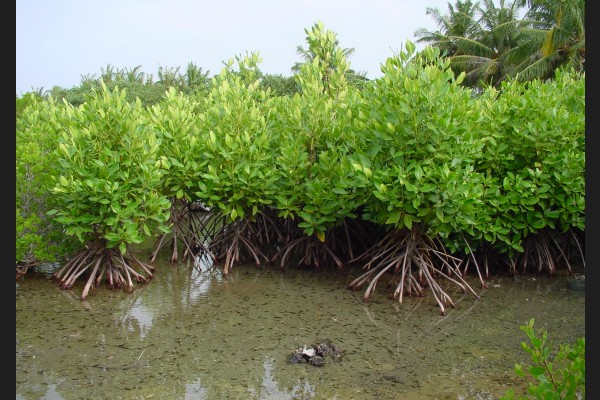A government project in 2010 had destroyed one of Kulhudhuffushi island's two mangroves


Kulhudhuffushi island of Haa Dhaalu Atoll was named after its famed and centuries-old mangroves
In 2010, Netherland-based maritime infrastructure company Boskalis reclaimed a part of Kulhudhuffushi island in Haa Dhaalu Atoll in a project commissioned by the government. The project, which promised more space for housing and commerce, had completely destroyed one of the island’s two famed mangroves, after which the island itself is named, much to the dismay of environmentalists – whom only two years ago were given constitutional authority to protest the destruction.
Now, seven years later news of another project that could destroy the island’s remaining mangrove – not only a naturally significant site because of its biodiversity but also a common tourist attraction – has caught hold. While this has environmentalists on the edge of their feet, they have begun protesting in front of the Environment Ministry headquarters in capital city Malé.
However, the ministry itself has reiterated its commitment to the project, in addition to politicians aligned with the ruling party repeatedly lauding over the benefits that an airport will bring to the island, despite residents having access to an airport in neighbouring Hanimaadhoo island, a little over 18 kilometers away.
The Kulhudhuffushi mangroves have an ancient history, and residents of the island believe that their forefathers used its waters over 900 years ago. The mangroves serve an important habitation grounds for sea-bound birds, some of them endangered. While a majority of the island’s residents and environmental protection activists hold their breath in horror, the project itself is marred with several discrepancies.
Local non-profit Ecocare was quick to label the project a violation of the constitution, siting Article 22 of the constitution which states that ‘the state shall undertake and promote desirable economic and social goals through ecologically balanced sustainable development and shall take measures necessary to foster conservation, prevent pollution, the extinction of any species and ecological degradation for any such goals’.
Further, while the environmental laws state that the Environment Protection Agency (EPA) and its members have the authority to greenlight a project in light of the environmental impact assessment, this project was made the exception and was approved by Environment Minister Ibrahim Thoriq himself. The project’s impact on the island’s ‘fragile’ – as noted by the ministry itself – environmental infrastructure aside, this sets a dangerous precedent to such projects. A precedent that dictates that the cabinet can bypass the constitution if they see fit and made decisions that please a crowd, while destroying natural dwellings that take centuries to grow.